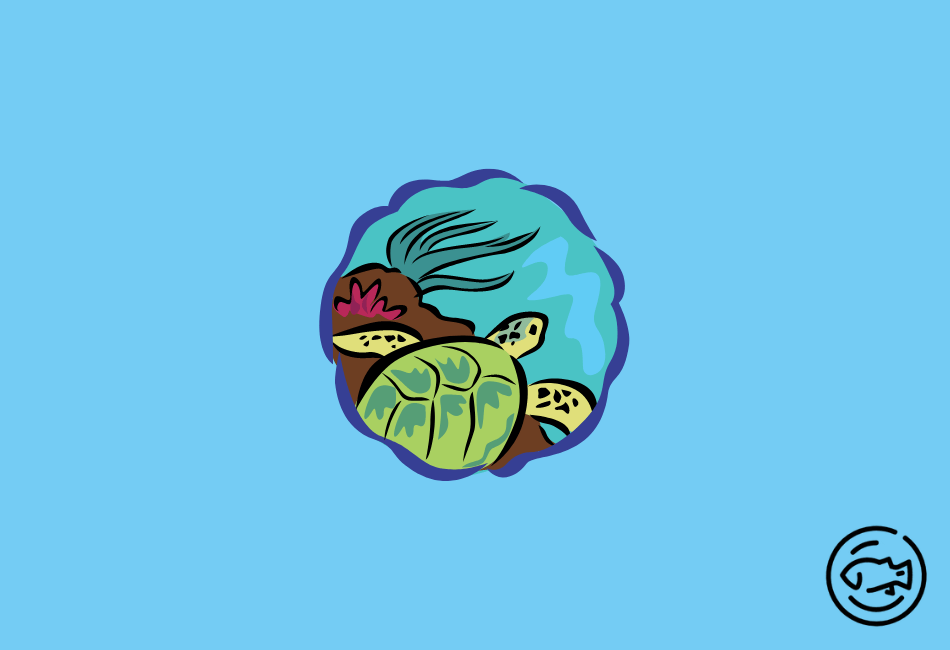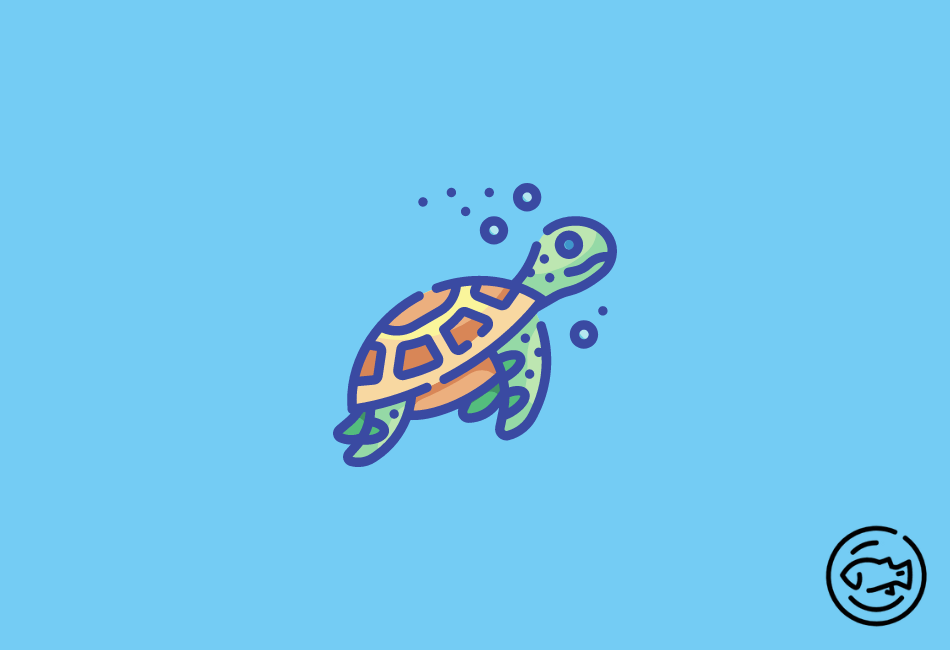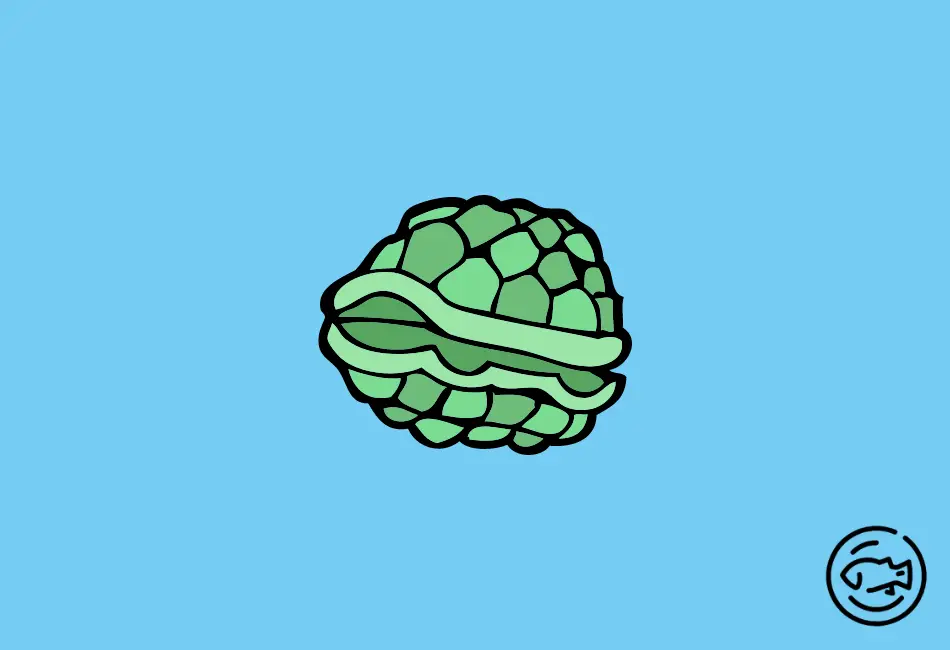You must be wondering why your turtle’s shell is soft and what causes them; then you have arrived at the right site as today we are going to discuss this only.
There are mainly two reasons why it happens.
Metabolic Bone Disease, or MBD as it’s known, is a condition that can affect turtles. It occurs when there isn’t enough calcium and vitamin D in their diet to maintain the hardiness of bones, leading them to develop soft shells instead!
Notice any changes with your turtle-like an increase in Russet colors on its skin. These may be signs that they have developed metabolic disorders due to him not getting enough nutrients from food sources alone – adding supplements should help bring those levels back up, so they don’t gradually deteriorate over time.
The other reason for soft shells in young turtles can be a result of a bacterial infection.
Shell Rot is usually caused by bacterial or fungal infection in this process, and it weakens your pet’s shell until they cannot swim anymore!
If you notice that they have lost interest or fins are slow-folding around your turtle’s body, then take them straight back to their vet for advice about the next steps.
A turtle’s shell is the protective outer layer of its body, and it can sometimes be soft and thin when a turtle needs to sneak away from predators.
The main cause of soft shell syndrome and shell rot in turtles is malnutrition or dehydration. If your turtle isn’t getting enough nutrients or water, its shell may soften as it begins to decompose. However, this can efficiently be rectified with the right care plan.
There may be several reasons for a turtle’s soft shell.
Some turtles may have separated from the water and need a larger shell that will provide enough space for them to get back into the water.
When a turtle is wet and cold, its shell can grow tear droplets to keep it warm.
This can cause the cartilage of its shell to shrink, making it both smaller and thinner – making it too soft in appearance and size.
Turtles will also shed their shells periodically to grow larger or replace damaged and old skin with a new one.
If you’re experiencing pet health problems, your vet must determine the cause of these ailments. They will then be able to provide targeted treatment options for them!
Common Causes For Why Turtles Shell Is Soft?

There may be several causes for why your turtle’s shell is soft?
The foremost thing fishkeepers should do is to ensure that their turtles are getting enough food and water, are not dehydrated, and are not in danger of escaping.
The leading cause of the soft turtle shell is that it could signify Metabolic Bone Disease(MBD) and shell rot. If these are not treated fast enough, then it could be disastrous.
The major reasons the turtle’s shell goes soft are the absence of calcium, inadequate lightning, an unbalanced diet, and an impaired basking platform.

Insufficient Calcium Intake
Without enough calcium, your turtle may have a soft shell. Turtles are often thought to be eating plenty of pellets. Still, suppose they’re not getting the recommended amount. In that case, it can cause Metabolic Bone Disease(MBD) and an issue with their shells, making them look deformed.
Sometimes, if there aren’t enough minerals in the diet, it can also cause soft shell syndrome in turtles. Therefore, you must ensure adding calcium supplements or particularly calcium blocks into the diet.
Natural Deficiency
Your turtle’s poor diet may affect its shell’s quality and texture. If you want a hardy, healthy creature, they must eat both turtle pellets as well as vegetables with every meal!
If you see that your turtle appears to be having a problem with digestion or sporting issues such as slow growth, low appetite & weight loss – it could very well be a natural deficiency of certain vitamins.
Ensure they get all these essential nutrients by adding supplements into their diet!
Inadequate Lightning
If you want your turtle’s shell to grow strong and hard, then provide them with UVB lighting as soon as possible. If not given this vital care of their bones in proper Vitamin D3 light will cause soft-shelled turtles, which could also lead to white residue on its surface due to excess production by pigment cells.
If your pet turtle needs light to survive, you should get them a UVB light. This will help keep their vitamin D levels up so they can better use it in the metabolism process!
Proper Basking Platforms
Turtles need to get out of the water and onto land so they can dry off completely. In captivity, without natural sunlight shining on them or access to a basking spot near the turtle tank walls where it’s warm enough for long periods during cold months at night time when temperatures dip below 70° Fahrenheit (21°C).
To avoid this fate, ensure you provide plenty of open spaces or a basking platform within your enclosure so that the turtles can absorb the required amount of D3, which is essential for their health.
Symptoms Why Turtle Shell Is Soft?

If you witnessed any of the signs mentioned here, your turtle might be going through a soft shell, and make sure you read the section above to learn more about the causes.
A soft shell can be diagnosed by looking at your turtle’s eyes. There should be no swelling or tear drops – if there are, this may indicate that his shell is too soft or dehydrated. If there are teardrops, consult your vet immediately, as this condition could be serious.
Common damages that a soft shell can give are the loss of the turtle’s appetite and loosening of his limbs – this may happen due to the fact that he is not able to support himself as well with a damaged shell. This is dangerous because it can cause him to get stuck or eat something that could be poisonous.
Here are Tips for a fishkeeper to ensure that the shell of the turtle does not become soft.
Also Read: Do Turtles Snore? – How, When, Why & More!
Check For Dehydration
If your turtle’s shell is suddenly soft and he’s not getting enough food, you should check if he’s dehydrated first.
This can be easily done by submerging him in shallow water and seeing if his neck still floats above the water or if his eyes are still sunken.
If they are sunken, this means that he needs to drink more water.
A turtle’s shell soft can happen after one day of dehydration if not enough water is consumed.
Dehydration can easily happen to turtles who live outside and those who reside in a tank full of air bubbles or dry land.
Ensure The Turtle Has The Right Nutrition
As turtle owners, make sure that the turtle’s diet contains the right nutrients to keep his shell strong and make sure that he is not just eating dirt or pebbles.
If a fishkeeper uses pellets, they should be large enough to be swallowed whole by the turtle.
In addition, if he is kept outside, make sure that there’s a source of water nearby where the turtle can cool off and fetch a drink at any time. Soaking him in water or letting him swim once a week will also help keep his shell strong.
Check For Illness Or Bacterial Infection
If your turtle’s shell is weak or soft and you notice any other symptoms like shell rot, consult a vet as soon as possible. He may be mourning from an ailment or infected with parasites.
Make Sure He Is In A Safe Environment
The turtle should never be kept in an area where he might escape into the wild.
If he is kept outside, ensure that his container can keep him away from predators such as dogs and cats – this can also protect his shell from getting damaged by other animals.
It’s also important to ensure that the tank door cannot accidentally be opened when it shouldn’t so your pet turtles don’t get out of their home.
Encourage Him To Grow By Feeding Him A Limited Amount
If a turtle’s shell is soft and he’s not getting enough food, ensure that you only feed him what he needs – an excess of food will slow down his growth and cause softer shells.
However, if you notice that your turtle starts to develop a dull look in his eyes or begins to lose weight, this may indicate that he has consumed too much food – it’s best to stop feeding him immediately.
Feeding your turtle too much may also damage his digestive system or cause violent diarrhea throughout the week, which can also cause the shell to be too soft.
How To Prevent Turtles Soft Shell?

Fishkeepers should never keep their turtles in a container that cannot go into the water.
They should make sure that their turtles always have fresh food and enough water for them to drink on land.
Although it may seem obvious, fishkeepers should also ensure that their turtle gets regular exercise, such as walks or even swimming sessions, to keep them healthy and strong.
If you know that your turtle’s shell is too soft, there are many ways you can fix the problem.
One way is to add an extra layer of protection to his shell.
A fishkeeper can do this by creating a box for the turtle to wear when he goes out into the wild.
This can be made with cardboard and covered in layers of plastic so that he won’t be able to tear through it and get out of his shell.
The turtle should also be kept warm during cold weather so that he won’t grow teardrops that will make his shell shrink from being wet and cold.
Another solution is to give your turtle an easier diet instead of one that comes directly from the box – you can feed him some leafy greens instead and ensure a better turtle’s diet.
If your turtle’s shell is too soft, it may have calcium deficiency, and you must ensure that it gets more protein and vitamin B12.
Both of these will help regenerate his outer layer and eventually help grow him into a new, harder one. The turtle should be stuffed with plenty of carrots and leafy greens to provide him with extra nutrition.
Fishkeepers can also add extra supplements into their turtle’s water, particularly calcium and vitamin B12, if they want to give them extra nutrients so that the turtles do not have any calcium deficiency.
Conclusion
A soft shell is a common occurrence in freshwater aquatic turtles.
This may occur due to a lack of proper nutrition, which can cause diseases like Metabolic Bone Disease (MDB) and Shell Rot.
And, the turtle is too cold while out of the water and not getting enough UV light or UVB light.
This can be efficiently averted by keeping your turtle hydrated and in a safe area.
If you notice that his shell has become soft after being outside in the winter, make sure that he doesn’t get exposed to cold weather (for example, frozen ponds or flooded basements).
You can also create a box to wear when he goes out into the wild so that he won’t leave.


